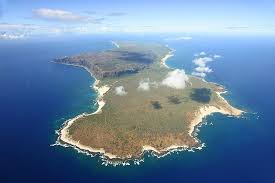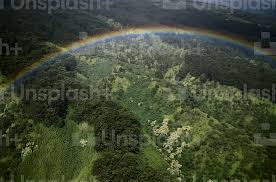Discovering the Magic of Maui’s Four Seasons
The Four Seasons of Maui: A Paradise for All Seasons
Maui, known as the “Valley Isle,” is a destination that offers something for every season of the year. From lush tropical landscapes to pristine beaches, Maui’s diverse climate and terrain make it a paradise waiting to be explored.
Spring
In spring, Maui comes alive with vibrant colors as flowers bloom and waterfalls flow abundantly. It’s the perfect time to hike through lush rainforests, witness migrating humpback whales, and attend cultural festivals celebrating Hawaiian traditions.
Summer
Summer in Maui brings warm temperatures and clear skies, ideal for snorkeling in crystal-clear waters and lounging on golden sandy beaches. Adventure seekers can try surfing, zip-lining, or hiking up dormant volcanoes for breathtaking views.
Fall
As fall arrives, the island transitions into a quieter season with fewer crowds. It’s a great time to explore Maui’s charming towns, savor fresh local cuisine at farm-to-table restaurants, and witness mesmerizing sunsets over the ocean.
Winter
Winter in Maui is synonymous with whale-watching season when thousands of humpback whales migrate to the warm waters surrounding the island. Visitors can also experience world-class golfing, spa retreats, and cultural performances showcasing Hawaiian history.
Regardless of the season you choose to visit Maui, you’ll be greeted with warm hospitality, stunning natural beauty, and a sense of tranquility that makes this island truly magical.
Exploring Maui Year-Round: Seasonal FAQs on Weather, Activities, Events, and Accommodations
- What is the best time of year to visit Maui for each season?
- What activities are popular in Maui during each of the four seasons?
- How does the weather vary on Maui throughout the year?
- Are there any seasonal events or festivals that take place on Maui?
- What are some recommended accommodations for visitors looking to experience all four seasons in Maui?
What is the best time of year to visit Maui for each season?
When considering the best time to visit Maui for each season, it’s essential to factor in personal preferences and desired activities. Spring, from April to June, offers blooming flowers and cultural festivals. Summer, from July to September, is ideal for beach activities and water sports. Fall, from October to December, provides a quieter experience with pleasant weather for exploring the island. Winter, from January to March, is perfect for whale-watching and enjoying outdoor adventures under clear skies. Ultimately, the best time to visit Maui depends on individual interests and what experiences you hope to have on this beautiful island throughout the year.
What activities are popular in Maui during each of the four seasons?
Maui offers a diverse range of popular activities throughout the four seasons. In spring, visitors can enjoy activities such as hiking through lush rainforests, attending cultural festivals, and whale-watching as humpback whales migrate. Summer brings opportunities for snorkeling in clear waters, surfing on pristine beaches, and hiking up volcanoes for panoramic views. Fall is ideal for exploring charming towns, dining at farm-to-table restaurants, and witnessing stunning sunsets over the ocean. Winter in Maui is synonymous with whale-watching season, along with golfing, spa retreats, and cultural performances that showcase Hawaiian traditions. Whether you’re seeking adventure or relaxation, Maui’s activities cater to every season and interest.
How does the weather vary on Maui throughout the year?
The weather on Maui varies throughout the year due to its diverse microclimates. In general, Maui experiences mild temperatures year-round, with cooler and wetter conditions in the winter months (November to March) and warmer, drier weather in the summer months (April to October). The windward (northeastern) side of the island tends to be wetter, with lush rainforests and frequent showers, while the leeward (southwestern) side is drier and sunnier, making it ideal for beach activities. Visitors should be prepared for sudden changes in weather and pack accordingly when exploring different regions of Maui to fully experience its varied climates.
Are there any seasonal events or festivals that take place on Maui?
Maui is home to a variety of seasonal events and festivals that showcase the island’s rich culture and heritage. From the vibrant Aloha Festivals in the fall to the Maui Film Festival in the summer, there is always something exciting happening on the island. Visitors can immerse themselves in traditional Hawaiian music and dance at cultural events, indulge in delicious local cuisine at food festivals, or witness thrilling sporting competitions throughout the year. These events not only provide entertainment but also offer a deeper insight into Maui’s unique traditions and community spirit.
What are some recommended accommodations for visitors looking to experience all four seasons in Maui?
When seeking accommodations in Maui to experience all four seasons, there are several options that cater to different preferences and budgets. For those looking for luxury and top-notch amenities, resorts in Wailea offer a high-end experience with access to pristine beaches and upscale dining. Visitors wanting a more laid-back vibe can opt for boutique hotels in Lahaina or Paia, providing a charming atmosphere and proximity to local shops and restaurants. Vacation rentals in Upcountry Maui offer a unique opportunity to immerse oneself in the island’s rural beauty while experiencing cooler temperatures and stunning views. Whether you prefer beachfront resorts, cozy cottages, or mountain retreats, Maui offers a diverse range of accommodations to suit every traveler’s needs throughout the changing seasons.




